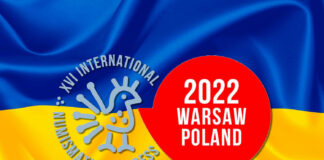The exhibition “Barbarian Tsunami” is dedicated to dramatic events in the history of Europe which disturbed the civilization of Late Antiquity between the end of the 4th and the early 6th century, the time known as the Migration Period. Those were the days of intense migration of Barbarian tribes which invaded the Roman Empire with territories throughout Europe and North Africa and struck the final blow to the Western Roman Empire, some of them originated from the territory of modern Poland. They often established their own kingdoms over its ruins.
A selection of the most important objects from the Odra and the Vistula river basin region, supplemented with a few finds from the Black Sea region and the territory of today’s France, was displayed at the joint exhibition which is based on collections compiled by Polish museums. Most of the objects come from hoards and richly furnished graves. They illustrate the presence of various communities on the territory of Poland as well as their role in cultural exchange and transformations of the Migration Period against a background of events that happened before this period (the 3rd and the 4th century) and afterwards (the 6th and 7th century).
In this video you can get an overview of the historical events. But please select “sound on”!
The exhibition was organised by the National Museum in Szczecin and the University of Warsaw in cooperation with eleven museums. It is also the outcome of the National Science Centre-funded Maestro project “The Migration Period between the Odra and the Vistula” which was run in the recent years at the University of Warsaw by a group of Polish researches in collaboration with fellow researchers from other European countries.
The exhibition was presented in twelve museums in Poland starting from the end of October 2017 to March 2020. It combines traditional display, where the objects play a crucial role, with modern technologies which, in a dynamic yet discreet way, allow to expand information about the period, the items, and the results of natural sciences research supporting the reconstruction of the past settlement.
To learn more about the exhibition go to the official website.
Here you can see objects in 3D or download a PDF of the exhibition’s catalogue.





